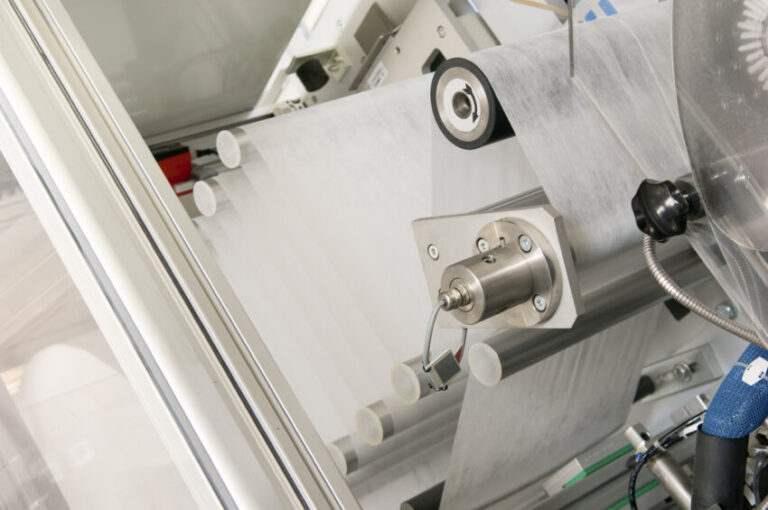[ad_1]
From the development of the needle and thread to the emergence of e-commerce, fashion has always been at the forefront of innovation.
Fashion, like technology, is forward-thinking and cyclical. It is also one of the world’s most significant sectors, expected to be valued at over $3 trillion by the end of the decade. This industry’s technology is advancing at a faster rate than ever before, especially when it comes to making popular items like Adidas shoes. Robots that sew and cut fabric, AI algorithmic technology that forecasts trends, virtual reality-enabled clothing – a slew of technologies demonstrate how technology is automating, customizing, and speeding up this industry. Fashion firms work with technology providers, acquire start-ups, and even develop their own technology to expand their income streams and business models.
Meanwhile, as the sector confronts its long-overdue environmental and social impact, it is re-examining processes throughout the value chain to reinvent itself. These are the trends transforming the way our clothing and accessories are created, made, distributed, and sold.
In Terms Of A Designer
Fashion businesses of all sizes and specializations use technology to quickly analyse and predict market demand and react with fashionable designs and customizable trends. Artificial intelligence will fundamentally alter how firms approach product design and development, with an emphasis on anticipating what consumers will want to wear next. However, algorithms will not be able to take the position of human designers anytime soon. If design houses’ efforts have shown anything, human engagement is critical for harnessing AI insights and converting them into attractive, wearable clothing. Google has previously experimented with user-driven AI fashion design with Project Muze, a 2016 experiment conducted in collaboration with German retailer Zalando.
The study trained a neural network to recognize colours, textures, style preferences, and other “aesthetic factors” gleaned from Google’s Fashion Trends Report and Zalando-sourced design and trend data. Due to the fact that pure AI-based design has sometimes fallen short of the goal, shops in this sector have developed a new paradigm in which AI systems are seen as creative collaborators rather than autonomous designers.
Tommy Hilfiger announced a collaboration with IBM and the Fashion Institute of Technology in 2018. The initiative, dubbed “Reimagine Retail,” made use of IBM artificial intelligence techniques to decipher:
- Trends in the fashion business in real-time
- Customer perceptions of Tommy Hilfiger’s merchandise and runway appearances
- Themes are resurfacing in popular patterns, shapes, colours, and styles.
The AI system’s knowledge was then returned to human designers, who might use it to make more educated design choices for their next collection.
The Manufacturing Process
Zara and H&M built their operations on a foundation of speed and adaptability. Once these retailers identify a new trend, they may use their hyper-rapid design and supply chain capabilities to accelerate the trend’s introduction to the market.
This enables quick fashion businesses to enter the market ahead of established names. Fast fashion manufacturers duplicate garments and accessories that are paraded down runways between September and February before the originals ever enter shops.
Fast fashion firms may provide a wider variety of clothing styles to suit the desires of smaller, more focused sectors of clients due to their near-real-time capacity to get the newest designs on shelves. Additionally, they may produce smaller runs to gauge client demand or offer collections with ultra-short lifespans.
Shein’s goal is to complete designs in three days. By contrast, Inditex, the company that owns Zara, takes an average of three weeks to get concepts from the drawing board to the shop and consumers are flocking to Shein, drawn by the retailer’s inexpensive pricing and the steady influx of new designs. It updates its website with over 1,000 new outfits every day. Shein eclipsed Amazon as the world’s most popular shopping app in May 2021. The expenses of establishing a fashion brand have decreased dramatically due to technological advancements and e-commerce. For example, manufacturing markets may employ AI to offer input on design feasibility and provide cost and production time estimates, possibly avoiding months of back-and-forth with suppliers.
Additionally, the advent of the online marketplace simplified the process of starting an online business and growing a following. Now that manufacturing costs have fallen, small or developing businesses can produce limited batches of items at affordable margins and then grow their online audiences from there. Historically, clothing brands were required to make hundreds or thousands of products to maintain an acceptable pricing point. Manufacturing marketplaces are growing in popularity among small firms and individuals looking to launch their own style lines.
How Does This Effect Our Future of Fashion
For every player in this business, including designers, producers, retailers, stylists, and, of course, customers, technology is altering the game. Innovative technologies such as blockchain and virtual reality offer a plethora of uses in the age-old industry, enabling manufacturing and distribution systems to advance at the same rate as shifting preferences and fashion trends. As a consequence of all of this, the sector will become more streamlined while also giving more possibilities than ever before. A surge of innovative production techniques, distribution networks, and even raw materials and textiles will increasingly enable firms to deliver hyper-personalized goods and experiences while still responding to consumer-driven environmental initiatives.
Automation has the potential to eliminate jobs in the fashion business. However, new positions in curation, customer service, and engineering are expected to emerge. As technology gets more personalized, expect more and more aspects of the designer’s and brand’s roles to change from tastemaker to taste-interpreter.
[ad_2]
Source link























0 Comments